 GDPR Compliance
GDPR Compliance
In today’s data-driven world, organizations must ensure compliance with the General Data Protection Regulation (GDPR) to protect personal data and uphold individuals’ privacy rights. GDPR compliance monitoring involves regularly assessing how data is collected, processed, stored, and shared to confirm adherence to GDPR requirements. Here are key steps for effectively monitoring GDPR compliance:
1. Conduct Regular Data Audits
Data audits are essential for understanding the types of personal data the organization handles, the sources, and the methods of processing. Regular audits help identify any gaps or non-compliant practices, ensuring the organization continuously aligns with GDPR’s principles.
2. Implement Data Protection Policies and Procedures
Organizations should establish comprehensive data protection policies that outline the procedures for data handling, breach responses, and individual rights management. These policies should be reviewed periodically to reflect updates in regulations or changes in data processing activities.
3. Train Staff on GDPR Principles
Regular training ensures employees understand GDPR requirements and their role in data protection. Training programs should cover data handling best practices, data security, and the importance of respecting data subjects’ rights. Continuous education reduces the risk of non-compliance caused by human error.
4. Monitor Data Subject Rights Requests
GDPR grants individuals several rights, such as the right to access, rectify, and delete their data. Organizations must have a system in place to track and respond to these requests within the required timeframe, ensuring that all rights are upheld consistently.
5. Utilize Data Protection Impact Assessments (DPIAs)
For new projects or data processing changes, conducting DPIAs is crucial to evaluate potential risks to data subjects’ privacy. DPIAs help in identifying and mitigating risks early, maintaining compliance, and demonstrating a proactive approach to data protection.
6. Regularly Assess Data Security Measures
Data security is a core component of GDPR compliance. Regularly testing security measures, including encryption, access controls, and breach detection systems, ensures they remain robust against evolving cyber threats and maintains the integrity and confidentiality of personal data.
7. Document Compliance Efforts
GDPR mandates organizations to demonstrate compliance. Keeping detailed records of data processing activities, compliance measures, DPIAs, and training sessions is essential for demonstrating due diligence in case of audits or inquiries from regulatory authorities.
Conclusion
Monitoring GDPR compliance is an ongoing process that requires vigilance, adaptability, and a proactive approach. By implementing these practices, organizations can ensure they are not only meeting GDPR standards but also fostering trust with their clients and protecting the personal data they manage.
 DORA Compliance
DORA Compliance
The Digital Operational Resilience Act (DORA) is an EU regulation designed to ensure that financial institutions can withstand and recover from all types of information and communication technology (ICT) disruptions. DORA mandates robust operational resilience measures, especially in areas such as risk management, incident reporting, and third-party monitoring. Here are the key steps for effective DORA compliance monitoring:
1. Conduct Regular ICT Risk Assessments
DORA requires financial institutions to conduct frequent ICT risk assessments to identify vulnerabilities within their digital infrastructure. These assessments allow organizations to pinpoint risks and implement controls to ensure ICT systems remain resilient and secure under all conditions.
2. Implement Strong ICT Risk Management Policies
Organizations must develop comprehensive ICT risk management policies that comply with DORA standards. These policies should cover aspects such as data protection, system security, and incident response. Regular reviews and updates to these policies ensure they remain relevant and effective against evolving threats.
3. Provide Ongoing Employee Training on Cyber Resilience
DORA compliance depends on a well-trained workforce aware of resilience practices and risk management protocols. Employee training should cover areas like cyber hygiene, incident detection, and emergency response to equip staff with the knowledge to handle ICT disruptions effectively.
4. Establish a Digital Resilience Testing Framework
DORA mandates that financial entities regularly test their ICT systems to validate resilience against potential cyber threats. This can include simulated attack exercises, stress testing, and vulnerability assessments, ensuring that systems are prepared for real-world scenarios.
5. Implement a Robust Incident Reporting Process
Under DORA, organizations must have a clear process for identifying, documenting, and reporting incidents. A well-defined incident response plan includes detecting incidents promptly, notifying relevant stakeholders, and taking corrective actions. Regular reviews of the reporting process are essential to maintain compliance.
6. Monitor and Manage Third-Party ICT Providers
DORA emphasizes the importance of managing third-party ICT providers to prevent supply chain vulnerabilities. Organizations should assess the resilience measures of third-party vendors, ensure compliance with DORA requirements, and establish contracts that outline security expectations and incident reporting obligations.
7. Document Compliance Measures and Incident Records
To demonstrate DORA compliance, organizations must maintain detailed documentation of their risk management activities, resilience testing, and incident response records. Proper documentation helps organizations prove adherence to DORA standards and prepares them for audits by regulatory authorities.
Conclusion
Ensuring compliance with DORA requires a proactive approach to digital resilience, with regular testing, robust risk management, and thorough monitoring of third-party services. By following these steps, financial institutions can safeguard their ICT systems, protect against operational disruptions, and uphold regulatory compliance as outlined by DORA.
 LPM Compliance
LPM Compliance
In sectors critical to national security, organizations in France must ensure compliance with the Loi de Programmation Militaire (LPM). This regulation mandates stringent security measures for organizations designated as Opérateurs d’Importance Vitale (OIV), requiring them to safeguard information systems that are essential to France’s national security. Monitoring LPM compliance involves implementing and continually evaluating security measures to protect sensitive infrastructure. Here are the critical steps for effective LPM compliance monitoring:
1. Conduct Regular Security Audits
Security audits are essential for assessing the organization’s compliance with LPM standards. These audits identify potential vulnerabilities, check adherence to security protocols, and ensure that critical infrastructure is protected according to the regulation’s requirements.
2. Develop and Update Security Policies
Organizations must establish and maintain comprehensive security policies aligned with LPM requirements. Policies should cover areas such as data access controls, encryption, incident response, and network monitoring. Regular updates to these policies ensure that they remain relevant in a constantly evolving threat landscape.
3. Train Staff on LPM Compliance Requirements
Ensuring that employees understand LPM requirements is critical. Training sessions should cover the importance of safeguarding critical systems, identifying threats, and responding to security incidents. Ongoing training fosters a culture of vigilance and reduces the risk of non-compliance due to human error.
4. Perform Security Risk Assessments
LPM compliance involves proactive risk assessment, where organizations identify and evaluate potential threats to their critical infrastructure. This helps in implementing appropriate security controls to mitigate these risks, ensuring continued alignment with LPM standards.
5. Implement Cybersecurity Incident Response Plans
Under LPM, organizations must have established protocols for detecting, managing, and reporting security incidents. Regularly testing and updating the incident response plan ensures readiness in case of a security breach and minimizes downtime and potential damage.
6. Monitor Access and Activity Logs
Continuous monitoring of access and activity logs is crucial to detect unauthorized access or unusual activity in critical systems. Log management and analysis help in identifying early warning signs of potential breaches, allowing swift action to prevent escalation.
7. Document Compliance Measures
To demonstrate LPM compliance, organizations must maintain detailed records of their security policies, audits, risk assessments, and incident reports. Proper documentation provides evidence of due diligence and readiness for regulatory inspections or audits.
Conclusion
Monitoring compliance with the LPM is an ongoing and dynamic process that requires rigorous security practices and proactive risk management. By following these essential steps, organizations can ensure that they meet LPM requirements, protect critical infrastructure, and contribute to the national security framework.
 NIS2 Compliance
NIS2 Compliance
The NIS2 Directive is a European Union regulation designed to enhance the cybersecurity of critical infrastructure across member states, expanding the original NIS Directive’s scope to include a broader range of essential sectors. NIS2 compliance is crucial for organizations to strengthen cybersecurity, ensure resilience, and protect against cross-border cyber threats. Here are the fundamental steps to effectively monitor compliance with NIS2:
1. Conduct Comprehensive Cybersecurity Audits
Cybersecurity audits are essential for evaluating an organization’s security posture and identifying gaps in compliance with NIS2 requirements. Regular audits help verify that systems and practices align with the directive, enabling organizations to make adjustments as needed.
2. Develop and Maintain Cybersecurity Policies
Organizations should establish robust cybersecurity policies that adhere to NIS2 standards, covering data protection, access controls, incident response, and network security protocols. These policies should be reviewed and updated regularly to keep pace with evolving cybersecurity threats and regulatory changes.
3. Provide Ongoing Training for Employees
Training programs are critical for ensuring that employees understand NIS2 requirements and can actively contribute to cybersecurity efforts. Regular training sessions should focus on identifying cyber threats, securing sensitive data, and following incident response protocols, fostering a security-focused organizational culture.
4. Conduct Regular Risk Assessments
NIS2 requires organizations to conduct detailed risk assessments to identify vulnerabilities in their critical infrastructure and supply chains. Risk assessments should be performed regularly to ensure that evolving risks are accounted for and appropriate security measures are in place to mitigate them.
5. Implement a Comprehensive Incident Response Plan
Under NIS2, organizations must have an established incident response plan to handle cyber incidents effectively. This plan should include protocols for detecting, reporting, and recovering from security incidents. Regular testing of the plan ensures preparedness and minimizes the impact of potential incidents on critical operations.
6. Ensure Supply Chain Security
NIS2 emphasizes the importance of securing supply chains to prevent vulnerabilities from third-party providers. Organizations should assess and monitor their suppliers’ security practices to ensure compliance with NIS2 standards and mitigate risks associated with external partners.
7. Document Compliance Efforts and Reporting
NIS2 mandates detailed documentation of cybersecurity measures, risk assessments, and incident responses. Organizations must keep accurate records to demonstrate compliance and facilitate transparent reporting to regulatory authorities in case of a cyber incident or audit.
Conclusion
Maintaining NIS2 compliance requires a proactive approach to cybersecurity that involves regular monitoring, employee engagement, and robust risk management. By following these key steps, organizations can strengthen their cybersecurity posture, reduce vulnerabilities, and protect critical infrastructure in alignment with NIS2 standards.
 PCI-DSS Compliance
PCI-DSS Compliance
The Payment Card Industry Data Security Standard (PCI-DSS) sets stringent requirements for organizations that handle cardholder data, ensuring secure processing, storage, and transmission of payment information. PCI-DSS compliance monitoring is essential for protecting sensitive data, maintaining customer trust, and avoiding financial penalties. Here are the main steps for effectively monitoring PCI-DSS compliance:
1. Conduct Regular Security Audits
PCI-DSS compliance requires frequent security audits to evaluate how well an organization adheres to data protection standards. Audits should assess network security, encryption practices, access controls, and vulnerability management to identify and address any compliance gaps.
2. Implement Strong Access Controls
Access to cardholder data should be limited strictly to authorized personnel. Organizations must establish and enforce strong access control measures, including multi-factor authentication (MFA) and role-based permissions, to prevent unauthorized access to sensitive data.
3. Maintain a Secure Network and Encrypt Sensitive Data
PCI-DSS mandates robust network security protocols, including firewall configuration and encryption of cardholder data during storage and transmission. Organizations should conduct regular testing of encryption measures and firewall configurations to protect data from unauthorized access.
4. Conduct Vulnerability Scans and Penetration Testing
Regular vulnerability scanning and penetration testing help identify potential security weaknesses within the organization’s network and applications. These tests provide insights into areas that may require strengthening, ensuring that systems are resistant to evolving threats.
5. Monitor and Log Access to Cardholder Data
Organizations are required to log and monitor all access to cardholder data and network resources. By maintaining detailed logs and monitoring for suspicious activity, organizations can quickly detect and respond to potential security incidents, maintaining PCI-DSS compliance.
6. Implement an Incident Response Plan
PCI-DSS compliance requires organizations to have a robust incident response plan that addresses potential security breaches. The plan should outline steps for detecting, containing, and remediating incidents, as well as procedures for notifying affected parties and relevant authorities.
7. Provide Ongoing Staff Training
Employees must be well-versed in data security practices to help prevent breaches. Regular training on PCI-DSS requirements, secure data handling, and recognizing phishing attempts strengthens the organization’s security posture and reduces the risk of accidental non-compliance.
8. Document Compliance Activities and Keep Records
To demonstrate PCI-DSS compliance, organizations must maintain thorough documentation of their security practices, vulnerability assessments, and incident response activities. Proper documentation supports compliance validation and provides evidence for audits by regulatory bodies or payment processors.
Conclusion
Monitoring PCI-DSS compliance is an ongoing process that demands vigilant security practices, regular assessments, and employee engagement. By implementing these steps, organizations can effectively protect cardholder data, maintain compliance, and reduce the risk of costly security incidents.
 Swift Compliance
Swift Compliance
The SWIFT network is vital for secure international financial transactions, and ensuring compliance with SWIFT’s security requirements is crucial to prevent fraud and maintain operational integrity. SWIFT’s Customer Security Programme (CSP) sets specific controls that financial institutions must implement to safeguard their SWIFT-related infrastructure. Here are the key steps for effectively monitoring SWIFT compliance:
1. Conduct Regular Security Audits
Regular audits are essential for assessing compliance with SWIFT’s CSP controls. These audits evaluate security controls, network configurations, and data handling practices, helping identify areas that may require enhancement to meet SWIFT’s standards.
2. Implement Strong Access Controls
Access to SWIFT systems should be tightly controlled. Multi-factor authentication (MFA), role-based access, and monitoring of user permissions help ensure that only authorized personnel can access SWIFT environments, reducing the risk of unauthorized activity.
3. Secure SWIFT-Related Infrastructure
SWIFT compliance requires securing infrastructure elements, including firewalls, network segmentation, and encryption. Organizations should regularly update these security measures and perform vulnerability assessments to keep SWIFT-related systems protected from cyber threats.
4. Monitor Transaction Activity for Anomalies
Organizations must monitor SWIFT transactions to detect unusual patterns that may indicate fraudulent activity. Advanced monitoring tools and real-time analysis of transaction data help in quickly identifying and responding to suspicious activity.
5. Conduct Penetration Testing
Regular penetration testing is crucial for identifying potential vulnerabilities within SWIFT-related infrastructure. By simulating cyberattacks, organizations can assess the robustness of their security defenses and improve their ability to withstand real threats.
6. Establish a Strong Incident Response Plan
SWIFT compliance requires a documented incident response plan that details how to handle security incidents within SWIFT systems. The plan should cover steps for identifying, containing, and remediating security incidents, as well as communication protocols for notifying SWIFT and relevant authorities if needed.
7. Train Employees on SWIFT Security Standards
Staff must be trained on SWIFT’s CSP controls, including best practices for secure access, data handling, and incident reporting. Regular training reduces the likelihood of human error, ensuring that employees can contribute to SWIFT security efforts effectively.
8. Document Compliance Measures and Incident Logs
SWIFT compliance involves maintaining detailed records of security practices, audits, and incident responses. Proper documentation not only supports SWIFT compliance validation but also provides essential records for internal and external audits.
Conclusion
Ensuring compliance with SWIFT standards is an ongoing commitment that requires consistent security measures, regular monitoring, and employee awareness. By following these key steps, financial institutions can safeguard SWIFT transactions, protect against fraud, and maintain trust within the global financial network.
 TISAX Compliance
TISAX Compliance
The Trusted Information Security Assessment Exchange (TISAX) is an information security standard tailored for the automotive industry, ensuring secure data handling and exchange among manufacturers, suppliers, and service providers. Achieving and maintaining TISAX compliance is essential for suppliers working with automotive companies to protect sensitive information and maintain trust within the industry. Here are the essential steps for effective TISAX compliance monitoring:
1. Conduct Regular Information Security Audits
Regular security audits are crucial to assess adherence to TISAX requirements. Audits help identify vulnerabilities in areas such as data protection, access control, and incident response, ensuring that security practices align with TISAX standards.
2. Establish Comprehensive Information Security Policies
Organizations should implement detailed security policies that meet TISAX requirements, covering areas such as data classification, encryption, access controls, and physical security. These policies should be reviewed regularly to adapt to changes in business processes or evolving threats.
3. Train Employees on TISAX Requirements and Best Practices
Employee training is critical to maintaining TISAX compliance. Training should cover information security protocols, secure data handling, and incident reporting to ensure that staff are knowledgeable and vigilant in their daily operations.
4. Conduct Risk Assessments and Vulnerability Management
TISAX requires organizations to conduct ongoing risk assessments to identify potential threats to information security. Implementing a vulnerability management program helps address identified risks, ensuring that the organization remains resilient against emerging security threats.
5. Implement Access Control and Data Protection Measures
Access control is central to TISAX compliance. Organizations should limit access to sensitive data to authorized personnel only, using methods like role-based permissions and multi-factor authentication (MFA). Additionally, data encryption and secure storage protocols are critical to safeguarding information.
6. Monitor and Log Information Access and Activity
To ensure compliance, organizations must monitor access to information and log activity across networks and systems. Monitoring tools allow organizations to detect unauthorized access and unusual activity, helping to prevent and respond to potential security breaches.
7. Develop and Test an Incident Response Plan
A well-defined incident response plan is essential for addressing security incidents under TISAX. The plan should include procedures for detecting, managing, and resolving incidents. Regular testing of the plan ensures readiness and reduces response time during actual security events.
8. Document Compliance Activities and Maintain TISAX Certification
To maintain TISAX compliance, organizations must document all compliance-related activities, including security policies, risk assessments, and incident reports. This documentation supports TISAX certification renewal and provides evidence of compliance for audits by partners and clients.
Conclusion
Maintaining TISAX compliance requires continuous monitoring, risk management, and commitment to secure data handling. By following these steps, automotive industry suppliers can ensure compliance with TISAX standards, protect sensitive data, and maintain their standing as trusted partners in the automotive ecosystem.

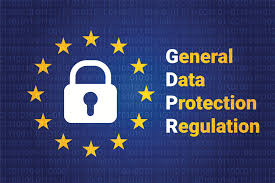 GDPR Compliance
GDPR Compliance DORA Compliance
DORA Compliance LPM Compliance
LPM Compliance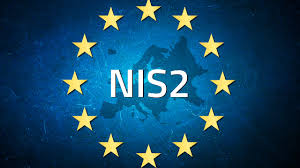 NIS2 Compliance
NIS2 Compliance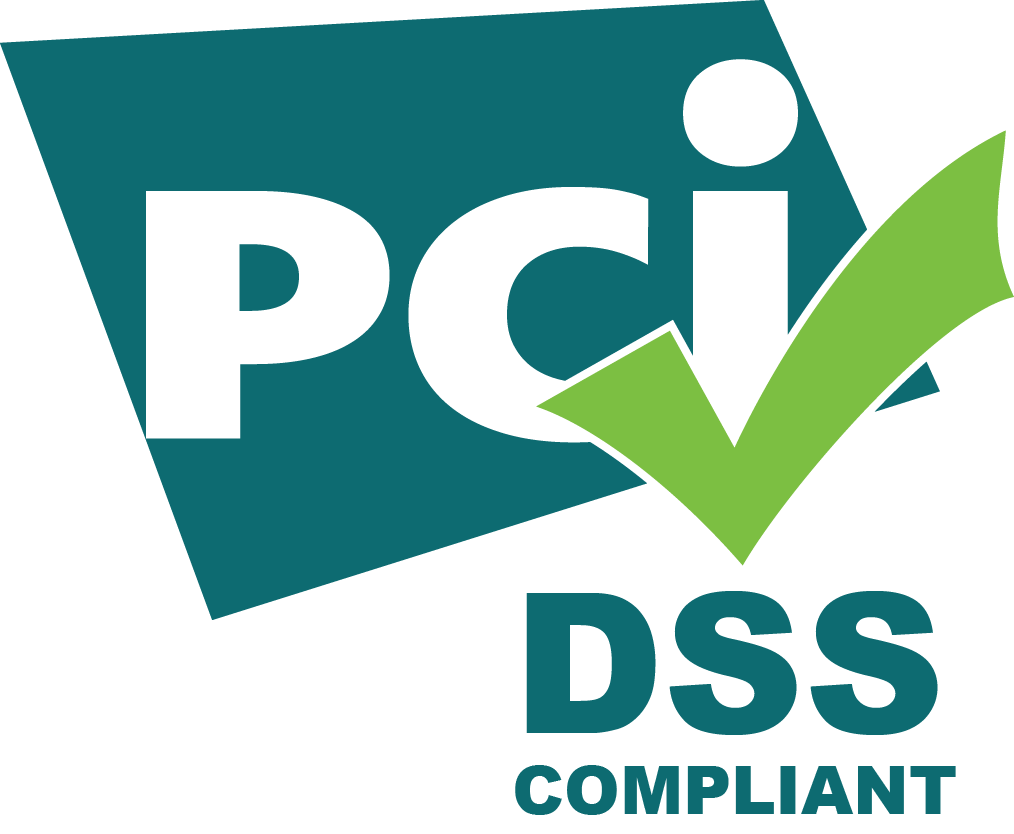 PCI-DSS Compliance
PCI-DSS Compliance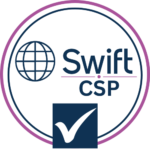 Swift Compliance
Swift Compliance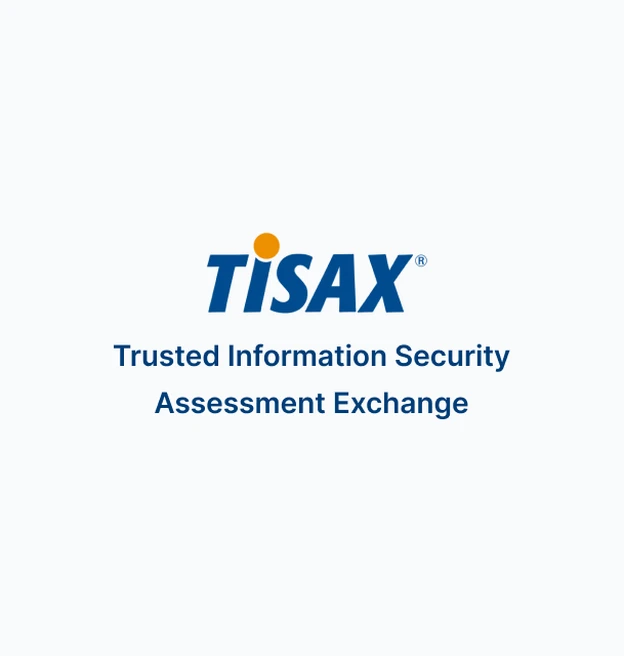 TISAX Compliance
TISAX Compliance